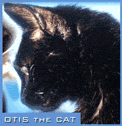Mara Hvistendahl, a The New York Times reporter who wrote “The Panda Factories”–an extraordinary piece of investigative journalism probing the impact of China’s gambit nearly 30 years ago to send pandas to zoos in other countries, hoping the visiting animals would breed, ultimately resulting in pandas that could be returned to the wild–recounts the genesis of the story.  On the path to revealing a raft of important information, “The Panda Factories” presents a fundamental
On the path to revealing a raft of important information, “The Panda Factories” presents a fundamental fiction about the “conservation” efforts that many zoos tout: It’s baloney—animals born at zoos are rarely, or never, released into the wild. We discuss how this is a core element of the piece, Hvistendahl explaining how, over the course of her reporting, not only did the conservation outcome of the panda program fail to materialize, but widened out into something more nefarious and mercenary. I raised the notion of certain animals at zoos functioning as marquee attractions, noting that for many zoos–for many years–elephants served that role. But in the last generation or so, the zoo industry has had something of a reckoning regarding displaying elephants, with multiple zoos realizing that’s no way for elephants to live, and sending their elephants to sanctuaries. (It happened again this week: the Oakland Zoo, despite having a relatively large and lauded elephant habitat, sent its elephant, Osh, to The Elephant Sanctuary in Tennessee.) Hvistendahl responds to my inquiry about whether she foresees a time where there might be
fiction about the “conservation” efforts that many zoos tout: It’s baloney—animals born at zoos are rarely, or never, released into the wild. We discuss how this is a core element of the piece, Hvistendahl explaining how, over the course of her reporting, not only did the conservation outcome of the panda program fail to materialize, but widened out into something more nefarious and mercenary. I raised the notion of certain animals at zoos functioning as marquee attractions, noting that for many zoos–for many years–elephants served that role. But in the last generation or so, the zoo industry has had something of a reckoning regarding displaying elephants, with multiple zoos realizing that’s no way for elephants to live, and sending their elephants to sanctuaries. (It happened again this week: the Oakland Zoo, despite having a relatively large and lauded elephant habitat, sent its elephant, Osh, to The Elephant Sanctuary in Tennessee.) Hvistendahl responds to my inquiry about whether she foresees a time where there might be  a similar reckoning whereby zoos re-assess the pros and cons of making deals to exhibit
a similar reckoning whereby zoos re-assess the pros and cons of making deals to exhibit pandas. On the subject of “making deals,” and how much of the panda picture appears to be characterized by a “money talks” ethos, at all levels, Hvistendahl addresses the fee zoos pay for the right to exhibit a pair of pandas for a year ($1.1 million), the additional dough charged if a pair has a cub ($600k), ranging to the bonuses paid to breeding centers in China for every cub that lives to six months ($1400), as well as the esoteric remuneration for “special achievements” ($7050). With so much cash at stake for the birth of baby pandas, it probably shouldn’t be surprising that artificial insemination has become central to the panda program. But it is disturbing, with the procedure sometimes carried out in sloppy fashion, and on occasion, it was downright painful, or worse, for the pandas, as detailed in Hvistendahl’s piece and discussed in our conversation. (Photo Credits…Pandas: The New York Times; Gift Shop: Ariana Drehsler for The New York Times)
pandas. On the subject of “making deals,” and how much of the panda picture appears to be characterized by a “money talks” ethos, at all levels, Hvistendahl addresses the fee zoos pay for the right to exhibit a pair of pandas for a year ($1.1 million), the additional dough charged if a pair has a cub ($600k), ranging to the bonuses paid to breeding centers in China for every cub that lives to six months ($1400), as well as the esoteric remuneration for “special achievements” ($7050). With so much cash at stake for the birth of baby pandas, it probably shouldn’t be surprising that artificial insemination has become central to the panda program. But it is disturbing, with the procedure sometimes carried out in sloppy fashion, and on occasion, it was downright painful, or worse, for the pandas, as detailed in Hvistendahl’s piece and discussed in our conversation. (Photo Credits…Pandas: The New York Times; Gift Shop: Ariana Drehsler for The New York Times)
 ALSO: I spoke briefly with Rick Chaboudy, Executive Director of the Suncoast Animal League, in Palm Harbor, who described Suncoast and its mission (he’s also the organization’s co-founder). He recounts that Suncoast emerged relatively unscathed from Hurricanes Helene and Milton. That’s the good news. The bad news, though, is that Dogtoberfest—their biggest, most important event each year—will be postponed until 2025, owing to Highlander Park, typically the Dogtoberfest site, being used as a post-storm FEMA location. Suncoast organizes and participates in many events, large and small, and Chaboudy briefly describes an imminent one: The “Canines & Cowgirls Adoptable Pet Fashion Show,” happening Sunday, Oct. 27, from 4pm to 8pm at Neighborhood Bark. He notes the activities planned for that day include the Best Dressed Pet Contest (including dogs dressed as cowgirls), live music, a video booth to capture selfies and memories from the event, and lots more. A portion of the ticket proceeds go to Suncoast Animal League (https://www.suncoastanimalleague.org/, https://www.facebook.com/events/1516549915611121/)
ALSO: I spoke briefly with Rick Chaboudy, Executive Director of the Suncoast Animal League, in Palm Harbor, who described Suncoast and its mission (he’s also the organization’s co-founder). He recounts that Suncoast emerged relatively unscathed from Hurricanes Helene and Milton. That’s the good news. The bad news, though, is that Dogtoberfest—their biggest, most important event each year—will be postponed until 2025, owing to Highlander Park, typically the Dogtoberfest site, being used as a post-storm FEMA location. Suncoast organizes and participates in many events, large and small, and Chaboudy briefly describes an imminent one: The “Canines & Cowgirls Adoptable Pet Fashion Show,” happening Sunday, Oct. 27, from 4pm to 8pm at Neighborhood Bark. He notes the activities planned for that day include the Best Dressed Pet Contest (including dogs dressed as cowgirls), live music, a video booth to capture selfies and memories from the event, and lots more. A portion of the ticket proceeds go to Suncoast Animal League (https://www.suncoastanimalleague.org/, https://www.facebook.com/events/1516549915611121/)
COMEDY CORNER: Mike Birbiglia’s “Pandas and Porn” [DS edit] (https://www.birbigs.com/)
MUSIC: Rebekah Pulley’s “Talking Animals Theme,” instrumentals
NAME THAT ANIMAL TUNE: We didn’t play “Name That Animal Tune” today.
AUDIO ARCHIVE:
Listen Online Now:



